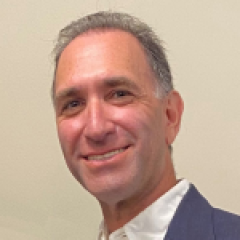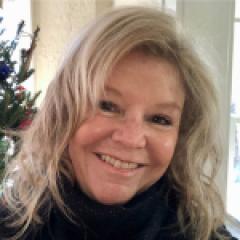Answer Sheet: A Haven for Refugees, This Nebraska High School Builds a Web of Support for its Diverse Student Population

Lincoln High School student Aya Al-Janabi works on her work independently. (Photo by Si Moo)
It may surprise you to learn that Lincoln, Nebraska, is a haven for refugees (and between October 2015 and September 2016 actually led the nation in resettling the most refugees per capita). This is reflected in the life of the incredibly diverse Lincoln High School.
Lincoln, which serves students who collectively speak more than 30 languages, is one of eight schools from around the country that were selected in the 2017 “Schools of Opportunity” project, which recognizes public high schools that work to close opportunity gaps by creating learning environments that reach every student.
[Here are eight ‘Schools of Opportunity’ that do extraordinary things for students]
The Schools of Opportunity project started in 2014 as a pilot in New York and Colorado, and went national in 2015-16. Several dozen schools have been honored in the program, which assesses a range of factors (see graphic below), including how well the adults in a school building provide health and psychological support for students as well as judicious and fair discipline policies, and broad and enriched curriculum.
The following piece profiles Lincoln High School. It was co-written by Kevin Welner, one of the founders of the Schools of Opportunity project, who is director of the National Education Policy Center at the University of Colorado at Boulder and a professor specializing in educational policy and law. The other co-writer is Linda Molner Kelley, former assistant dean of teacher education and partnerships, and director for outreach and engagement at the University of Colorado Boulder.
The effort to detail successful public schools in traditional districts may have more resonance than ever in the era of President Trump, whose education secretary, Betsy DeVos, has made it her top priority to expand alternatives to them.
This blog recently profiled the Chicago High School for Agricultural Sciences, and will publish profiles of other winning schools in the 2017 Schools of Opportunity cycle — six “gold” and two “silver.” Along with the Chicago and Lincoln schools, the other gold winners are: Broome Street Academy Charter High School in New York City; Denver South High School in Denver; Health Sciences High & Middle College in San Diego; Lincoln High School in Nebraska; and Seaside High School in California. The two Silver Schools of Opportunity for 2017 are: Hammond High School in Columbia, Maryland; and William C. Hinkley High School in Aurora, Colorado.
[The 20 schools that won 2016 Schools of Opportunity awards — and why they were selected]
[Down on the farm, these Chicago high school students get a unique public education]
By Kevin Welner and Linda Molner Kelley
Lincoln High School
Lincoln, Nebraska
Principal: Mark Larson
Superintendent: Stephen Joel
Enrollment: 2,030
Economically Disadvantaged: 65 percent
At Lincoln High School in Nebraska, the slogan “In the Middle of Everywhere” is more than just a fun jab at teasing about being “flyover country.” It actually reflects the life of the school, which lives those words every day through its vibrant, immigrant student community hailing from seemingly everywhere around the globe.
These students are blessed with an array of broadly available course offerings that engage them in challenging academics and rich arts programs, buttressed by strong support systems for students and their families.
The entrance to Lincoln High School is decorated with flags representing the home countries of the school’s 2,000 students, reflecting the Nebraskan city of Lincoln’s designation as the largest per capita refugee site in the country in 2015-16. Lincoln High School is the only majority non-white high school in Lincoln and serves students representing over 30 different languages.
Not many schools can boast a student NAACP chapter, Las Razas Unidas, a Middle Eastern club, a Karen Zomi Karenni club, and a Native American caucus.
Building on students’ unique backgrounds and experiences, the school is exceptionally positioned to deliver an educational program focused on living, learning and working in a diverse society.
The school prioritizes creative and thoughtful approaches for meeting the needs of students with first languages other than English. These students are guided through language learning classes and subject area classes. Four language liaisons provide direct support for students and their families.
Separately, Spanish heritage speakers (students with varying levels of proficiency whose native language is Spanish) are offered a program to develop cultural understandings as well as literacy in their heritage language, highlighting the school’s belief in bilingualism as an asset. The course also prepares these students for enrollment in AP Spanish.
Seeking to foster dialogue across language and cultures, International Baccalaureate (IB) program students and English Language Learners (ELL) partnered to create a new club, Fork in the Road. Further, the school supports “Cultural Ambassadors,” students who serve as multilingual liaisons to help ELL parents and others navigate the school.
A safe, welcoming school environment and non-exclusionary discipline policies (i.e., policies designed to address discipline issues without pushing students out of school) help to create a culture of support. After implementing Positive Behavior Intervention and Supports to resolve student behavior issues a few years ago, school disciplinary referrals decreased by 23 percent. Even in-school suspensions have decreased by 60 percent.
Students at Lincoln highly value the school’s diversity. A white female student said that the community provides her “with opportunities to experience real world interactions” and helps her “learn about different perspectives on life’s topics.” She added, “The acceptance of all cultures, races, genders and sexualities is an aspect of Lincoln High that I … take pride in.”
The school has taken significant steps to “detrack” its curriculum, creating opportunities for formerly marginalized students to participate in higher-level course offerings such as its IB program. Lincoln hosts information programs in local middle schools that have high numbers of students of color, inviting these students into its IB courses and explaining the school’s supports for success. As part of these supports, the school offers an Emerging Scholars Program that matches middle school students with juniors and seniors in IB classes. IB and AP classes are open to all who want to enroll.
Teachers learn how to support students, building on students’ strengths and cultures and encouraging students to challenge themselves with advanced coursework. A bilingual student stressed how important this is, saying, “Being bilingual at [Lincoln] in the IB program means being able to contribute toward this program of international-minded learning. I’m able to share my experiences as being both an immigrant and bilingual, and I believe this sometimes allows me to have different perspectives I’m able to share with my peers.”
Another bilingual student reinforced this point: “The IB program just encourages accepting other cultures that are different from what you’re typically used to. I really like that aspect of embracing other cultures and [knowing that] being bilingual is an OK thing… The IB program has made the world seem a little bit smaller. There are connections with everyone else.”
Rich art offerings also build on the school’s cultural differences. According to a Lincoln art teacher, “I believe that curriculum that is culturally relevant is not a difficult thing to do… [O]pportunities to learn about those who are active in a field should easily include multiple cultures…, and allowing students to explore their own interests and voices will always make the work relevant to their lives, cultures and experiences.”
She explained how students “express their own views and ideas through artwork,” offering examples of “public artwork to change the physical space of the school and the thinking of their peers” and of art that explores “personal themes, ranging from feminism, to their youth, to ethnicity, to language.”
The school maintains a media center that houses music making, a “makerspace,” and resources for robotics, technology, and engineering. With the help of Lighthouse, a community non-profit, Lincoln supports its students by extending its media center hours.
The school also remains open weekday evenings and Saturdays. This allows students without home access to internet the opportunity to complete assignments. Tutors and school staff are also available during extended hours, and Lighthouse volunteers help students with assignments, job applications, scholarship information, and offer other resources they may not have at home. Representatives from Upward Bound, Life After High School and College Club are also available to students during this time.
An Academic Resource Center provides content-specific support for students after school, with teachers from each discipline available every day. A Saturday School staffed by teachers and administrators assists students who need academic support or fall behind.
A full-time Parent and Community Engagement Specialist facilitates ties between families and community. In addition, a Woods Charitable Foundation grant allows the school to offer group counseling focusing on anxiety, emotional regulation, and anger management. Another grant allows private therapists to work with students — often refugees — suffering from post-traumatic stress disorder. A local hospital partnership provides families access to physicians and other mental health professionals. Lincoln families also have access to clothing and food banks.
Additional affiliations with external organizations provide mentors, internship opportunities, and classes for students and their parents. These organizations include El Centro de Las Americas, the Asian Center and a community center focused on African American civil rights.
With students and staff known collectively as “The Links,” being part of the Lincoln High School experience means that everyone has a chance to connect — with each other, with rigorous and interesting courses, and with an engaged community that truly is “in the middle of everything.”
Congratulations to the LHS community for being a gold School of Opportunity.
This blog post has been shared by permission from the author.
Readers wishing to comment on the content are encouraged to do so via the link to the original post.
Find the original post here:
The views expressed by the blogger are not necessarily those of NEPC.


